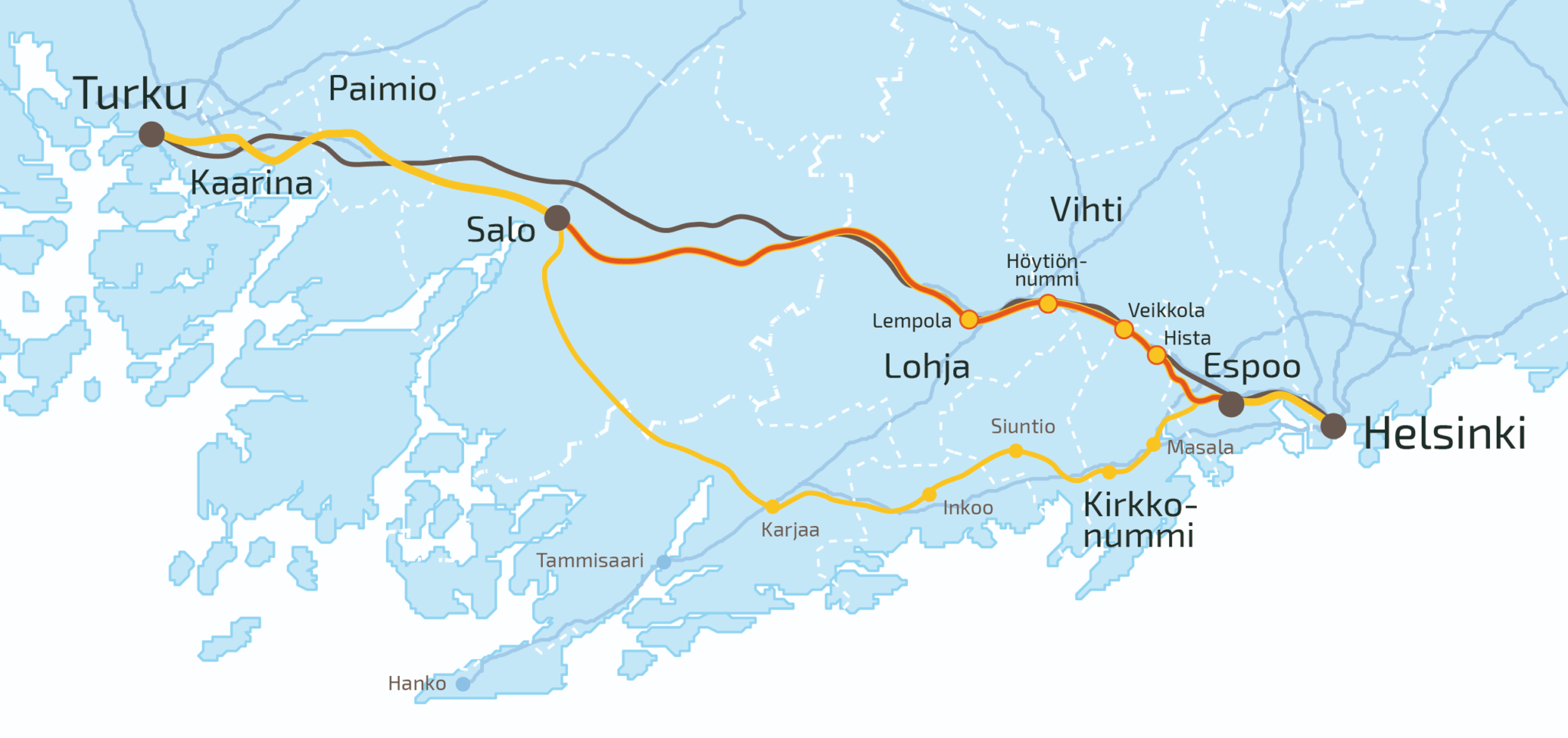
Espoo-Salo rail line with model-based general planning
A fast train service between Helsinki and Turku is a significant project both regionally and nationally. It will enhance labor mobility and have an impact on the operational environment, competitiveness, land use, and apartment production of companies. The project can be divided into four different parts: the Espoo urban railway line, the Espoo–Salo direct rail line, the Salo–Turku double track, and the Turku railway yards.
The aim is to devise a generally approved general plan for the Espoo-Salo direct rail line by the end of 2020. The Finnish Transport Infrastructure Agency has provided Infrakit as an information model environment for the project, which has been dubbed ESA. The project has been divided into three different tasks, where a combination model will be compiled into one shared model in Infrakit. We interviewed Proxion’s Infrastructure Team Leader Henri Lindholm on the direct rail line. Proxion is involved in the project as an expert in information modeling and cost management and as an Infrakit user.
What makes the ESA project special?
“Very early planning and the length of the track, which is 95 km, is what makes the ESA project special. So far not that many general plans have been devised using information modeling, meaning that the project is also used to develop modeling in the general planning stage. During general planning the information modeling accuracy level is fitted to correspond to the requirements of the general planning stage and to serve the needs and objectives of general planning”, Henri Lindholm explains.
What are the objectives of the modeling?
”Objectives of the modeling in the project are specifically:
– Using models in planning and as meeting material
– Keeping initial data up-to-date during the project
– Assuring compliance and quality of planning solutions
– Integration of plans
– Utilizability of the information model in client’s quality assurance
– Reuse value of information”
What benefits does Infrakit bring into the project?
“We intend the combination model to be open to both the client and the stake holders during the planning. Infrakit’s browser-based user interface enables this, leaving no need for separate installable applications. We hope that the 2D map user interface of Infrakit will provide benefits for example to the option comparison of geometries.”
“A special challenge in this project is the long stretch of line (closer to 100 km) being planned, followed by a vast amount of data and of course a considerable amount of users for the combination model with diverse roles (client, experts of the client, planning consultants, stake holders).”
More information on the Espoo-Salo direct rail line can be found on the website of the Finnish Transport Infrastructure Agency.
Linda Hakala
September 11, 2019
Book a Demo
Discover how Infrakit connects your entire infra project operations and drives value to every part of your business.

Recent Comments